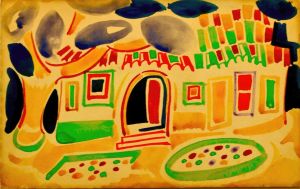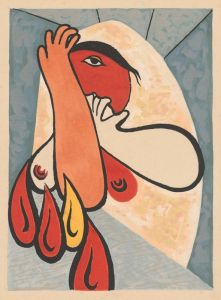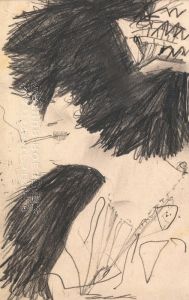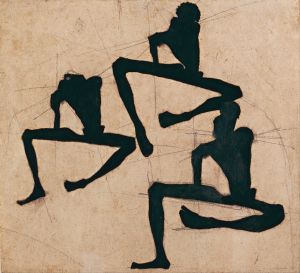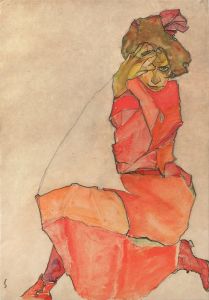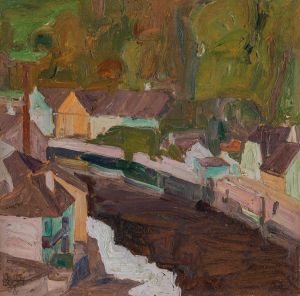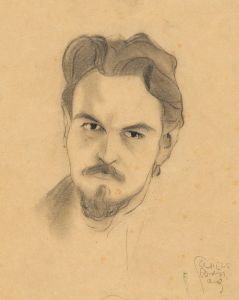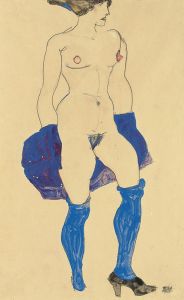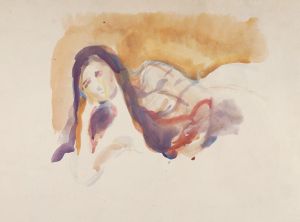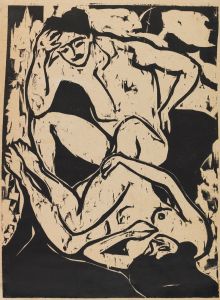
Weiblicher Akt
A hand-painted replica of Egon Schiele’s masterpiece Weiblicher Akt, meticulously crafted by professional artists to capture the true essence of the original. Each piece is created with museum-quality canvas and rare mineral pigments, carefully painted by experienced artists with delicate brushstrokes and rich, layered colors to perfectly recreate the texture of the original artwork. Unlike machine-printed reproductions, this hand-painted version brings the painting to life, infused with the artist’s emotions and skill in every stroke. Whether for personal collection or home decoration, it instantly elevates the artistic atmosphere of any space.
Egon Schiele was an Austrian painter known for his distinctive style and significant contributions to early 20th-century art. One of his notable works is "Weiblicher Akt," which translates to "Female Nude" in English. Schiele's art is often characterized by its raw emotional intensity, expressive line work, and exploration of the human form, and "Weiblicher Akt" is a prime example of these elements.
Created in the early 20th century, "Weiblicher Akt" reflects Schiele's fascination with the human body and his willingness to push the boundaries of traditional representations of nudity. Unlike the idealized forms often seen in classical art, Schiele's nudes are marked by their honesty and vulnerability. His approach to the human figure was both radical and controversial at the time, as he often depicted his subjects in unconventional poses and with an unflinching attention to detail.
Schiele's work was heavily influenced by the Expressionist movement, which sought to convey emotional experience rather than physical reality. This influence is evident in "Weiblicher Akt," where the use of bold lines and stark contrasts creates a sense of tension and immediacy. The painting's composition often features elongated limbs and exaggerated poses, which contribute to its dynamic and somewhat unsettling quality.
The artist's use of color in "Weiblicher Akt" is also noteworthy. Schiele often employed a limited palette, focusing on earthy tones and muted hues that enhance the emotional impact of his work. This choice of color, combined with his distinctive line work, gives the painting a haunting and introspective quality.
Egon Schiele's personal life and experiences had a profound impact on his art. He was a protégé of Gustav Klimt, another prominent Austrian painter, and was part of the Vienna Secession movement, which sought to break away from traditional artistic conventions. Schiele's career, however, was marked by controversy, particularly due to his explicit depictions of nudity and sexuality, which led to legal troubles and societal backlash.
Despite these challenges, Schiele's work, including "Weiblicher Akt," has gained recognition for its innovative approach and emotional depth. His ability to capture the complexities of the human condition has cemented his place as a significant figure in art history. Today, Schiele's paintings are celebrated for their contribution to modern art and continue to be studied and admired for their unique perspective on the human form.
"Weiblicher Akt" exemplifies Schiele's artistic vision and his commitment to exploring the intricacies of human emotion and identity. Through his bold and unorthodox style, Schiele challenged the conventions of his time and paved the way for future generations of artists to explore new forms of expression. His work remains influential, and "Weiblicher Akt" stands as a testament to his enduring legacy in the world of art.





